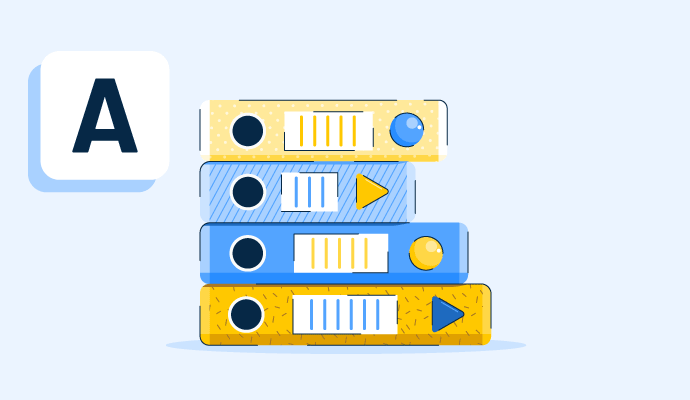What is an asset register?
An asset register is an ongoing, detailed list of all the assets a business controls. This includes both physical and digital assets related to the company’s operations.
The goal of the register is for businesses to easily organize and manage the assets they hold, keeping records of the financial aspect of these assets and any important non-financial details. The register may also include maintenance schedules to prolong the lifetime of the held assets.
Mid-to-large-sized companies typically use enterprise asset management (EAM) software to document information about their assets. These tools measure the performance and usage of assets, and track lifecycle information that can save money on repairs or replacements.
Types of asset register
For small businesses, a single asset register containing information on every held asset is usually sufficient. Larger businesses with more assets usually organize their registers by asset type. These might include:
- Digital assets. Not every business has extensive digital assets, but anything the company does have should be tracked. Examples are image or audio marketing files, documentation for processes or products and services, or even assets like cryptocurrency or non-fungible tokens (NFTs).
- Facilities and property. Physical spaces like offices or warehouses should be listed. Vehicles also count, along with any other physical property the business owns, like furniture, equipment, or machinery.
- Information. Any documentation, both digital and printed, should be added to this type of register. It should be noted that some of these assets may also fall under the digital asset category.
- IT. Both software and hardware used throughout the company need to be recorded in an IT register. This may comprise computers, smartphones, or tablets.
Basic elements of asset registers
Since the goal of an asset register is to keep companies organized, certain pieces of information should always be kept in the register.
- A description of assets is a brief summary of what the asset is. It easily identifies the asset as essential or not. Images should also be included if the EAM system can handle visuals. Details about the asset’s form may also be noted, such as if it’s a digital or physical file.
- Barcodes, serial numbers of assets, or any other unique identifying factors should always be included in the asset register to prevent loss.
- The purchase date and price inform many other parts of the register, like lifecycle forecasting and value.
- The location of both physical and digital assets should be noted for easy maintenance.
- Warranty and insurance information, along with any details about policies connected to the asset, should be recorded in the asset file in the register.
- The names of owners and users may not be applicable to every asset in the register, but should be recorded if a particular person or group of individuals in the business have control over a certain asset.
- Depreciation predictions give businesses time to decide if or when they should sell an asset to recoup costs or to minimize losses.
- Maintenance schedule details should also be in the register. Frequent reviews and maintenance extend the use time of an asset and ultimately save money.
- The estimated current and resale value of the assets ought to be on record in case the business wants to sell them.
Benefits of asset registers
Keeping information about assets in a single place saves significant time and money. Beyond maintaining organized records, asset registers can:
- Make auditing more straightforward. Whether the audit is external or internal, having details about every asset in one location simplifies the auditors’ job.
- Improve asset maintenance. All assets should have some level of upkeep throughout the year. Setting a schedule and continually monitoring the condition of assets can reduce financial waste on costly repairs or replacements.
- Reduce theft and loss. Workplace theft isn’t uncommon, and without an asset register, it’s easy for something to go missing. A complete and accurate set of information on all assets in the business mitigates loss, along with providing an audit trail if necessary.
Best practices for asset registers
Organizations have plenty of options for establishing their own asset register. To keep a simple, accurate set of information, registers should:
- Use dedicated software. Spreadsheets are fine to start with, but once a business has more assets to manage, using EAM software makes the process much simpler. These tools prevent human error and keep information arranged in a cohesive order.
- Group similar assets together. Whether using multiple registers or a single system, collecting assets that are like each other into one section of the database makes organization and updates easier.
- Update the register frequently. Maintain an ongoing list of assets that still need to be tracked in the register and periodically review each asset already listed. Update information like descriptions or locations, especially if the assets have moved somewhere else or are in a noticeably depreciated state since the last look.
Ensure every asset is accounted for throughout the year with audit management software.

Holly Landis
Holly Landis is a freelance writer for G2. She also specializes in being a digital marketing consultant, focusing in on-page SEO, copy, and content writing. She works with SMEs and creative businesses that want to be more intentional with their digital strategies and grow organically on channels they own. As a Brit now living in the USA, you'll usually find her drinking copious amounts of tea in her cherished Anne Boleyn mug while watching endless reruns of Parks and Rec.



















